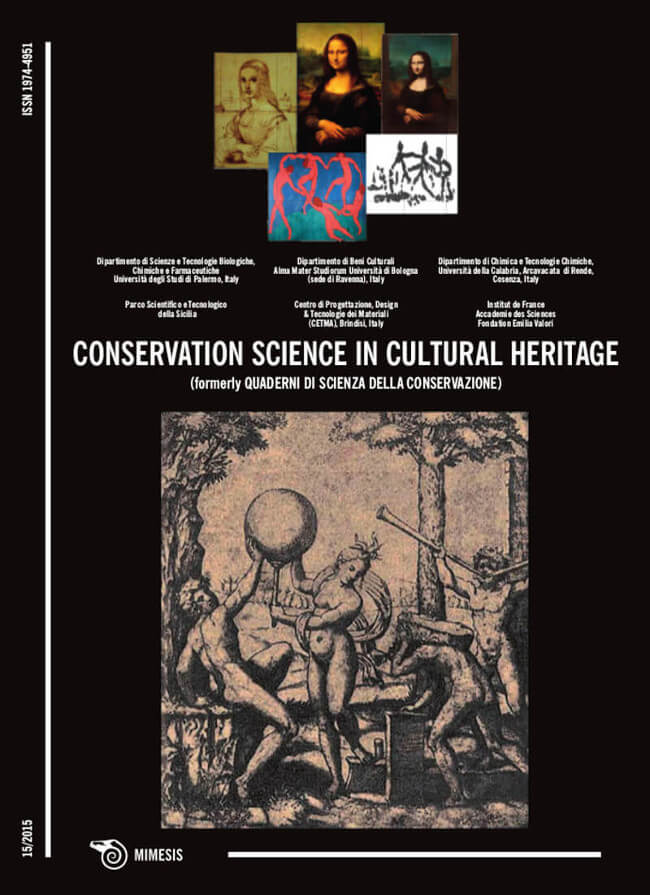Integrating Building Information Modeling and Augmented Reality to Improve Investigation of Historical Buildings
DOI:
https://doi.org/10.6092/issn.1973-9494/6174Keywords:
information modeling, augmented reality, software engineering, computer visionAbstract
This paper describes an experimental system to support investigation of historical buildings using Building Information Modeling (BIM) and Augmented Reality (AR). The system requires the use of an off-line software to build the BIM representation and defines a method to integrate diagnostic data into BIM. The system offers access to such information during site investigation using AR glasses supported by marker and marker-less technologies. The main innovation is the possibility to contextualize through AR not only existing BIM properties but also results from non-invasive tools. User evaluations show how the use of the system may enhance the perception of engineers during the investigation process.References
Fischetti, D. C. (2009). Structural Investigation of Historic Buildings: A Case Study Guide to Preservation Technology for Buildings, Bridges, Towers and Mills. John Wiley & Sons.
Wang, X. (2009). Augmented reality in architecture and design: potentials and challenges for application. International Journal of Architectural Computing, 7(2), 309-326
Eastman, C., Eastman, C. M., Teicholz, P., & Sacks, R. (2011). BIM handbook: A guide to building information modeling for owners, managers, designers, engineers and contractors. John Wiley & Sons.
Höllerer, T., & Feiner, S. (2004). Mobile augmented reality. Telegeoinformatics: Location-Based Computing and Services. Taylor and Francis Books Ltd., London, UK, 21.
Oreni, D., Brumana, R., Cuca, B., & Georgopoulos, A. (2013, July). HBIM for conservation and management of built heritage: Towards a library of vaults and wooden bean floors. In CIPA 2013XXV International Symposium, ISPRS Annals (Vol. 164, pp. 1-6).
Pauwels, P., Verstraeten, R., De Meyer, R., & Van Campenhout, J. (2008). Architectural Information Modelling for Virtual Heritage Application. In Digital Heritage–Proceedings of the 14th International Conference on Virtual Systems and Multimedia (pp. 18-23).
Shoaib, H. A Survey of Augmented Reality. interactions, 24, 34.
Amin, D., & Govilkar, S. COMPARATIVE STUDY OF AUGMENTED REALITY SDK’S.
Abboud, R. (2014). Architecture in an Age of Augmented Reality.
Koch, C., Neges, M., König, M., & Abramovici, M. (2012). BIM-based augmented reality for facility maintenance using natural markers. In Proceedings of the EGICE International Workshop on Intelligent Computing in Engineering.
Irizarry, J., Gheisari, M., Williams, G., & Walker, B. N. (2013). InfoSPOT: A mobile Augmented Reality method for accessing building information through a situation awareness approach. Automation in Construction, 33, 11-23.
Woodward, C., & Hakkarainen, M. (2011). Mobile mixed reality system for architectural and construction site visualization. INTECH Open Access Publisher.
Gheisari, M., Goodman, S., Schmidt, J., Williams, G., & Irizarry, J. (2014). Exploring BIM and mobile augmented reality use in facilities management. In Proceedings of the Construction Research Congress (pp. 1941-1950).
Hakkarainen, M., Woodward, C., & Rainio, K. (2009, October). Software architecture for mobile mixed reality and 4D BIM interaction. In Proc. 25th CIB W78 Conference (pp. 1-8).
Burns, D., & Osfield, R. (2004). Open scene graph a: Introduction, b: Examples and applications.
Bradski, G. (2000). The opencv library. Doctor Dobbs Journal, 25(11), 120-126.
Dhillon, R. K., Jethwa, M., & Rai, H. S. (2014). Extracting Building Data from BIM with IFC. Int. J. on Recent Trends in Engineering and Technology, 11(1).
Sobczak, M. (2004). A simple oracle call interface. Dr. Dobb’s Journal, 29(12), 52-55.
Bay, H., Tuytelaars, T., & Van Gool, L. (2006). Surf: Speeded up robust features. In Computer vision–ECCV 2006 (pp. 404-417). Springer Berlin Heidelberg.
Lowe, D. G. (1999). Object recognition from local scale-invariant features. InComputer vision, 1999. The proceedings of the seventh IEEE international conference on (Vol. 2, pp. 1150-1157). Ieee.
Calonder, M., Lepetit, V., Strecha, C., & Fua, P. (2010). Brief: Binary robust independent elementary features. Computer Vision–ECCV 2010, 778-792.
Rosten, E., & Drummond, T. (2006). Machine learning for high-speed corner detection. In Computer Vision–ECCV 2006 (pp. 430-443). Springer Berlin Heidelberg.
Henry, P., Krainin, M., Herbst, E., Ren, X., & Fox, D. (2012). RGB-D mapping: Using Kinect-style depth cameras for dense 3D modeling of indoor environments. The International Journal of Robotics Research, 31(5), 647-663.
Downloads
Published
How to Cite
Issue
Section
License
Copyright (c) 2015 Francesco Chionna, Francesco Argese, Vito Palmieri, Italo Spada, Lucio Colizzi
Copyrights and publishing rights of all the texts on this journal belong to the respective authors without restrictions. Authors grant the journal right of first publication.
This journal is licensed under a Creative Commons Attribution 4.0 International License (full legal code).
See also our Open Access Policy.






